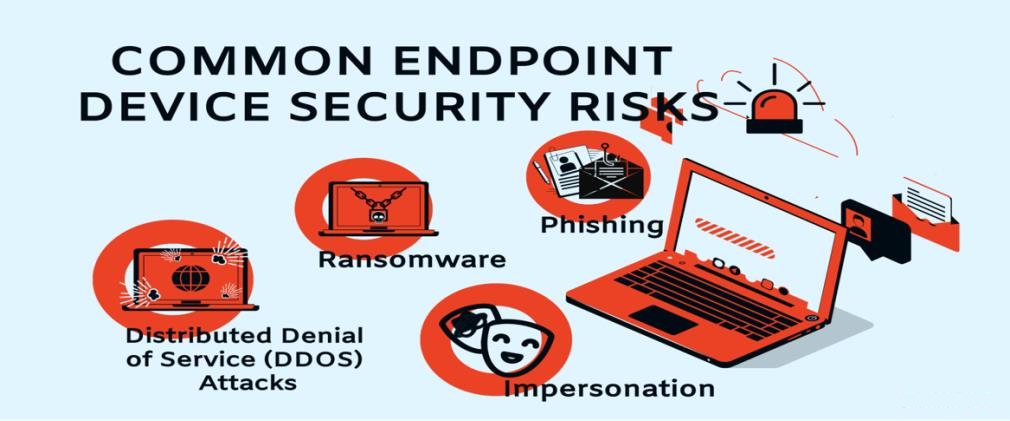Protecting Endpoints

Protecting Endpoints: A Comprehensive Approach
In today’s technology landscape, endpoint is critical to every individual and organization to achieve performance and meets their objectives. The endpoints hold critical asset and Personal Identifiable Information, invariably it is prime target to phish information or hold individuals’ ransom.
Endpoints, such as computers, mobile devices, and servers, are often the first line of defense against cyber threats. To safeguard your digital assets and data, it’s essential to adopt a proactive and multi-layered approach to endpoint security.
The explosion of mobile devices has brought about he Bring Your Own Device initiative which has opened areas where Mobile Device Management is applicable. All organizations whether large or SME are exposed to third Party Risks that was specific to some large organizations. Organizations be it large or small need to protect their endpoints and secure data.
There are open-source statistics that show that 68% of their organization have had their endpoints attacked and successively breach. In May 2017, there was a global attack, and several ransoms were allegedly paid due to WannaCry attack that hit global data and held many organizations captive.
The WannaCry attack has opened us to a large quest for how to secure and protect the endpoint. I was asked by CIO of commercial bank in Nigeria, is there a silver bullet to protect him and his organization, in his words, during the WannaCry global attack, was arguably the worst time of his life. He lost appetite for everything, and he did not know if he would have a job, or a demand would be made in the months ahead.

There are many endpoint attacks, and it is a growing list however below are 7 of the common types
- Malware Attacks: Malicious software to steal and/or disrupt operations. This software could be trojan, viruses, worms, and the likes.
- Phishing Attacks: These attacks are aimed stealing information using email or short messaging system to tactically take information off the user.
- Distributed Denial of Service Attack: The Popular DDOS attacks floods the system with traffic by prevents actual and legitimate users having access to the endpoint or its application.
- Social Engineering Attacks: Social Engineering attacks manipulates humans by using tricks or off-road tactics to divulge sensitive information, granting access, or taking malicious actions.
- Password Attacks: Common techniques like password cracking, brute force or guessing to gain access to endpoints
Insider Attacks: Attacks from authorized individuals doing malicious activities on one’s endpoint. This could be as easy stealing passwords or eavesdropping or tailgating. - Zero-day Exploits: These are known or unknown vulnerabilities that are exploited. Yet to be patched or update system or hardware vulnerabilities.
Despite these attacks, it is key to protect our endpoints and it can be done. These are some ways we protect the endpoints; we have to identity the risks, protect against it, defend, and plan a recovery with continuous monitoring.
7 ways of protecting the endpoint
- Deploy an effective endpoint security solution: This is not deploying an antivirus, it is having a whole strategy against virus, malware, social engineering, and other forms of attack. Some solutions are carbon black, Symantec, Mcafee and RSA ECAT are quite efficient.
- Perform regular system hardening process: Close unused port, manage and control access better. This is key in making it difficult for the attacker to breach the system.
- Implement Strong Password Policies: By enforcing strong password policies with regular updates. This method makes it difficult to gain access
- Monitoring and Audit: The evolution of remote staff and exposure to all sort of malwares means that constant monitoring with incident management is key to success for all organizations
- Encryption of System: Encryption of data and endpoint is key. Forestalling Man in the middle attacks, data at rest or hard drive encryption for key for laptops, mobile and servers.
- Business continuity plan: Every organization need to have plan to continue if or when it happens. It is critical for the business.
- Education and Awareness: It is important to educate users, customers and public on the dangers and process of keeping safe. This is the most potent remedy to social engineering.
In Summary, protecting the endpoints is sharing responsibility and it is ongoing process. There is no silver bullet however there are processes and procedures that can keep organizations safe and make them focus on their core business.
For more information, please reach out to [email protected]

